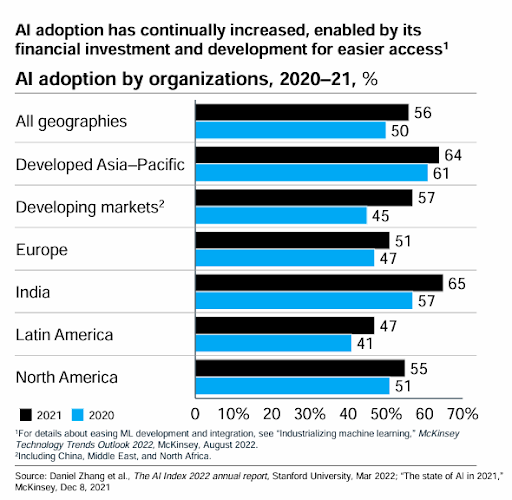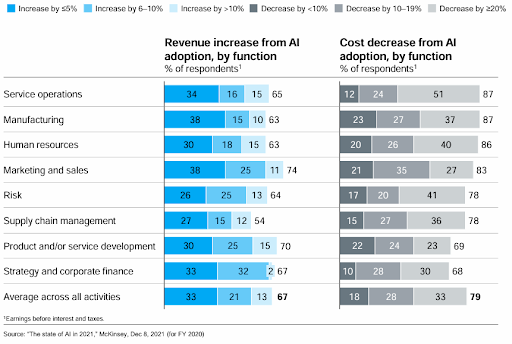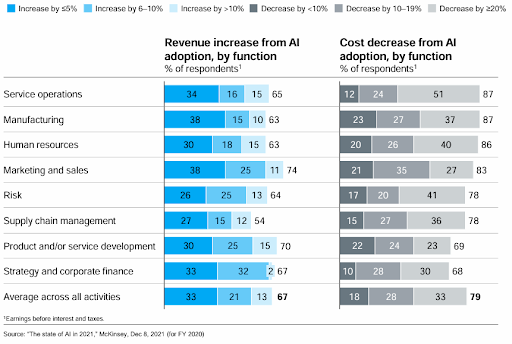The most meaningful conversations your customers have with your brand today often happen without human involvement—and that’s no longer surprising. Conversational AI has shifted from novelty to necessity, redefining how we engage, provide support, and build enterprise-scale trust.
Think about your day, from checking your bank balance to booking a flight or asking a chatbot about your order. Chances are, you’ve had a dozen machine-powered conversations before lunch. But what changed? We moved from pressing buttons to having natural conversations.
I’m Suresh Duraisamy, a software engineer for more than a decade. I’ve worked behind the scenes of systems you interact with daily—building AI that feels more human, understanding not just language but people. I’ve helped global enterprises move from clunky IVRs to naturally connected platforms.
In leading the development of messaging platforms and IVR systems, the challenge was rarely “Can AI understand?” It was, “Can AI respond like a human—across millions of interactions, securely, and with context?”
That’s where the real evolution began—not by adding automation but by architecting smarter, more human-centered systems. Today’s AI doesn’t just answer questions—it conveys tone, builds trust, and resolves issues before users know they exist.
This article explores how conversational AI matured into a core business enabler—what’s under the hood, what separates useful from exceptional, and what it takes to build systems that scale and earn trust.
From Hype to Utility: Why Enterprises Chose Conversational AI
For years, AI was confined to labs and demos. It’s foundational infrastructure—powering chatbots, voice agents, and proactive messaging across industries.
Why the shift? AI became the engine behind faster responses, lower costs, and 24/7 support—exactly what high-pressure teams needed.
In a senior technical role, I led the transformation of legacy contact centers into agile, AI-enhanced architectures. We engineered systems for intent recognition, contextual awareness, and seamless human handoffs—not just chatbot deployment.

The chart highlights how enterprise AI adoption rapidly increased in just one year. This mirrors the transformation I witnessed: enterprises weren’t just experimenting but embedding AI into the core of customer service and operations.
A survey about conversational AI reinforced this: AI increased accuracy and cut resolution time. These systems weren’t just handling volume—they engaged users with empathy and real-time responsiveness, supporting 150+ brands globally.
How It Works: The Brains Behind the Bots
At the heart of every successful conversational AI system is thoughtful architecture. I’ve built systems that combine rule-based precision with generative flexibility. This hybrid approach became the standard, factual grounding fused with adaptability and brand-safe tone across every channel.
This balance is critical in regulated domains like finance and healthcare.

This visual breaks down the two primary approaches to building conversational AI, emphasizing how technical structure (method) and end-user outcomes (goal) shape system effectiveness.
As outlined in this paper, hybrid systems blend retrieval models for factual grounding with generative models for natural, human-like responses. This allows agents to stay informed while sounding natural, especially crucial when the stakes are high, such as in healthcare or finance.
Even the smartest AI needs guidance. Without the right structure, tone, or data, helpful bots can become harmful. That’s why we didn’t just train models—we coached them.
My teams implemented rigorous evaluation: BLEU scores for precision, and user feedback for empathy. This dual-layer strategy aligned performance with human expectations.
A study on multimodal AI reinforced this approach, stressing the need to evaluate answers, understanding, and trust. With systems optimized for empathy and precision, the next frontier became scalability, reaching users across channels and contexts.
Scaling Conversations Across Channels and Contexts
People don’t just want quick answers—they want to feel heard. Whether they start on a website or on a phone call, they expect a seamless journey. That’s where multimodal systems come in.
In one campaign I led, we used CRM data, behavior logs, and calendar activity to tailor conversations. It wasn’t just automation—it was proactive, personalized support that reduced repeat contacts and boosted first-contact resolution.

This figure about taxonomy illustrates the framework used to build systems that combine text, audio, and visual input for more adaptive interactions, supporting seamless cross-channel experiences.
This research from arXiv shows how agents trained on diverse inputs—text, audio, visuals—deliver truly adaptive, humanlike interactions.
Personality also matters. Ameyo’s research emphasized persona-grounded models. The bots we built weren’t just accurate—they consistently carried brand tone and emotional intelligence across platforms. That consistency builds trust.
That consistency builds trust. In the customer experience, trust is the differentiator.
Trust, Bias, and Oversight: Building AI That’s Safe
Designing a powerful bot is one thing—making it safe is another.
One biased or awkward reply can go viral for the wrong reasons. That’s why we embedded multi-layered oversight—from editable drafts to real-time sentiment monitoring—to ensure AI remained user-sensitive and brand-safe.
Discussions in AI research emphasize the importance of human-in-the-loop frameworks, especially in domains requiring ethical sensitivity. Oversight models that allow real-time adjustments ensure that AI-generated responses align with brand values and user expectations.
Copilot tools allowed agents to fine-tune AI responses, ensuring each message reflected brand tone and stayed compliant, especially in sensitive conversations. This also sped up resolution time and reduced support teams’ burnout.
We implemented bias testing across languages and demographics and used contexts to ensure fairness at every level. I agree that this is a critical success factor for trustworthy AI.
Tools such as emotional sentiment detection also helped flag negative interactions early. AI doesn’t just solve problems—it should also know when it’s causing frustration and escalate accordingly.
From Use Case to Outcome: Lessons from the Field

Theory aside, real-world implementation is where systems are tested.
One project I worked on involved deploying a proactive messaging and IVR deflection solution for a higher education institution. The challenge was handling sudden spikes in inquiries—everything from enrollment to course access—without overwhelming support staff.

This illustrates the business value of AI across functions, highlighting revenue gains and cost savings in service operations, marketing, HR, and product development.
In my experience, results like reduced contact volume and higher first-resolution rates stem directly from combining AI architecture with operational intent. The visual above reinforces that customer service and product development are among the most high-impact AI applications.
The LivePerson x OUA case shows a similar success story: institutions benefit from scalable, conversational IVR systems that reduce operational burden and deliver better user outcomes. These results aren’t outliers—they happen when architecture, data, and design are aligned.
The Road Ahead: From Conversations to Companions
Conversational AI is no longer just about handling volume. It’s about deepening the connection.
In my current work, more clients ask not “Can AI answer this?” but “Can it reflect who we are?” That means infusing agents with tone, behavior, and even cultural nuance. For example, tailoring the agent’s tone to reflect brand voice—formal in finance, empathetic in healthcare, and upbeat in retail—builds stronger user affinity. It means thinking not just like engineers but like experienced designers.

The figure above estimates AI’s global value potential of $10–15 trillion, especially in marketing, supply chain, and service operations.
This reinforces the path we’re already on. Ameyo’s predictions suggest that AI agents will be emotionally aware, collaborative, and contextually intelligent. They’ll co-pilot alongside human teams, not replace them.
To meet that future, we need systems that scale intelligently, operate ethically, and adapt rapidly. We also need developers, product teams, and business leaders who are aligned on the same goal: designing for trust, not just output.
Designing for Conversation—and Connection
Conversational AI isn’t just technology—it’s infrastructure for connection. It sets the tone for brand trust, shapes the pace of support, and determines how users feel when they seek help.
From building smart messaging flows to designing bots that read tone and respond with empathy, I’ve seen what happens when tech meets intention. The path forward isn’t about pushing AI further but building it better. Better means architected for continuity, designed for trust, and evaluated by outcomes, not just throughput.
If you’re leading a transformation, building a support stack, or simply exploring where AI fits into your business, remember this: every conversation is a chance to connect. Every AI interaction is a choice: to transact or to connect. The systems we build must always choose connection, because trust doesn’t start with output; it begins with empathy.
About the Author
Suresh Duraisamy is a seasoned software engineer with over 15 years of experience designing scalable systems. He specializes in enterprise architecture, conversational AI, and cloud-based solutions. Suresh has led the development of high-volume messaging platforms and intelligent IVR systems supporting 150+ global brands. With a focus on user experience, secure architecture, and ethical AI, he continues to build technologies that bridge efficiency and empathy.
References:
- Adewumi, T., Liwicki, F. & Liwicki, M., (May 2022). A review of recent advances in chatbots. arXiv preprint. Available at: https://arxiv.org/abs/2205.00965
- Ameyo (August 2022). Top trends around Conversational AI in 2022. https://www.ameyo.com/blog/top-trends-around-conversational-ai-in-2022/
- Fu, T., Gao, S., Zhao, X., Wen, J. & Yan, R., (March 2022). A survey on dialogue summarization: Recent advances and new frontiers. Intelligence and Conversation, [online] 3(1). https://www.sciencedirect.com/science/article/pii/S2666651022000079
- LivePerson, (August 2022). OUA success story: Transforming student engagement through Conversational AI. https://www.liveperson.com/resources/success-stories/oua/
- McKinsey & Company, (August 2022). McKinsey Technology Trends Outlook 2022. https://www.mckinsey.com/~/media/mckinsey/business%20functions/mckinsey%20digital/our%20insights/the%20top%20trends%20in%20tech%202022/mckinsey-tech-trends-outlook-2022-full-report.pdf
- Sundar, A. & Heck, L., (May 2022). A human-centric evaluation benchmark for conversational AI. arXiv preprint. https://arxiv.org/abs/2205.06907
- Xue, Z., Li, R. & Li, M., (April 2022). A survey on task-oriented dialogue systems. arXiv preprint. https://arxiv.org/abs/2204.09719
